A spectre is haunting Tibet (as Marx used to say), a spectre of itself. A Tibet double, invented by clever Chinese agricultural economists, now walks alongside actual Tibet, every step of the way. It is officially known as Synthetic Control Tibet. This ghost, if you look closely, is actually made up of Xinjiang, Shaanxi and Liaoning, all pretending to be Tibet. And the ghost is doing better than the real Tibet, the Chinese inventors tell us. Now read on.
Economists envy laboratory scientists, for their ability to run experiments over and over, altering just one variable, in order to isolate cause and effect. Economists cannot rewind events, or control the variables, or treat human populations like lab rats.
Yet economists badly want to be taken seriously as scientists, who generate empirical findings based on objective evidence, just like the lab coats do.
They try to sound as scientific as possible, often obscure their work in equations written in Greek symbols, and deploy the impersonal, legislative voice of science wherever possible. Thus we come to Synthetic Control Tibet, a statistical fiction of what Tibet Autonomous Region might have become economically had history been different. Inevitably, it takes math to get there.

This involves taking GDP stats for other provinces, especially the poorer peripheral provinces supposedly similar to Tibet, as substitute lab mice, to see if they run faster before or after 1987. That’s how economists mimic laboratory trials.
The rolang zombie they create in their math lab is Synthetic Control Tibet, a creature that lurches about, not only wanting to live but to grow, thwarted by the terrible affliction of separatism. “Given the 1987-89 unrests in Tibet which were the violent manifestation of separatism, it offered a good social experiment for us to investigate the economic consequence of ethnic separatism. This article fills the gap in the current literature by estimating the economic impact of the 1987-89 Tibetan unrests with use of the Synthetic Control Method. We find that if there were no such unrests, Tibet may enjoy around 27% higher GDP per capita during 1988-2007.”

How was Synthetic Control Tibet synthesised? “Yu and Sun set up and researched two “synthetic” Tibet models. If there had been no unrest in Tibet between 1987 and 1989, the region’s economic development should have followed the weighted average GDP of the “synthetic” Tibet. ‘If the real Tibet’s GDP growth diverges from the number of ‘synthetic’ Tibet, the finding could be treated as the ‘economic cost of separatism’,’ Yu said. One “synthetic” Tibet model is composed of Northwest China’s Qinghai Province, Gansu Province and the Xinjiang Uyghur Autonomous Region. Another model is a combination of Northwest China’s Xinjiang Uyghur Autonomous Region, Shaanxi Province and Northeast China’s Liaoning Province. It is notable that before 1987, the GDP growth trend of the two models were almost the same as that of the real Tibet. However, after the unrest in 1987, the weighted average of GDP per capita of the two “synthetic” Tibet was 26.98 percent higher than the GDP number of real Tibet.”[1]

That makes for a headline, scientific proof that Tibetans are their own worst enemy, and need to realise Han benevolence is for their own good. The Global Times headlines were prompt. None of this would matter much, just a couple of obscure academics bending numbers to prove a predetermined hypothesis. However, CCP media jumped on this story, gave it oxygen.
Before the journal Defence and Peace Economics first 2019 issue was out, Global Times ran with it: “Cost of Sepratism: If there had been no unrest from 1987 to 1989, the Tibet Autonomous Region may have enjoyed around 27 percent higher GDP per capita from 1988 to 2007, said Chinese researchers at the University of Goettingen in Germany. ‘We attribute the long-term effects of separatism on economic performance to the distortion in resource allocation induced by ethnic hostility and distrust,’ said the research paper written by Professor Yu Xiaohua and research fellow Sun Feifei, from the Department of Agricultural Economics and Rural Development at the University of Goettingen.”
The same 30 January 2019 edition of Global Times, a party outlet sometimes described as “the CCP’s id”, for its blunt language, carried another story on Tibet, repeating the official line: “Tibet leads China’s GDP growth as tourism, infrastructure drive economic expansion. Among the 31 provincial-level regions that had revealed their 2018 economic achievements as of Wednesday, Southwest China’s Tibet Autonomous Region ranked first with 10 percent GDP growth on a year-on-year basis. It was the only region that achieved double-digit growth last year amid a nationwide economic slowdown. Last year was also the 26th consecutive year of double-digit growth for Tibet. In 2018, Tibet’s GDP reached 140 billion yuan ($20.84 billion), up 10 percent from 2017. That was well above the national rate of 6.6 percent, the regional government’s work report said on January 10.”
The invention of Synthetic Control Tibet may be just a blip, soon forgotten. However, it is symptomatic of something much bigger, as is evident in the diagrams scattered through this blog, all from China’s master text on “modernization science.”
China’s leaders are obsessed with proving themselves to be masters of modernity, development, prosperity, civilisation (including “ecological civilisation) and much more. Thus they have firstly to show they have mastered the dynamics of modernisation, which Tibetans so churlishly rejected in 1987.
Here we enter into strange territory, in fact what Marxists usually call a contradiction. On one hand, China insists it does not have a development model of its own, it is simply following universal laws of development, the same laws followed by countries already rich, not only in the West but in Japan, S Korea, Taiwan etc. To say China has its own unique development model would only enrage the Trumpists, because that is exactly what they accuse China of.
Yet China, at official level, also insists that everything it does, every policy, must have “Chinese characteristics.” China is instructing Tibet in socialism with Chinese characteristics, stability with Chinese characteristics, development with Chinese characteristics, and cannot understand why Tibetans fail to see much benefit.
So when it comes to “modernisation science”, China slavishly adopts a deeply biased Eurocentric model, with all the categories and timelines, and supposed laws, wholly taken from European and US history. That’s a contradiction.
In fact, no-one in Euro-America talks (as they did in the 1950s and 1960s) of “laws of development” or “modernisation science.” To say the least, development theory has been vigorously debated around the world, over several decades, except in China.
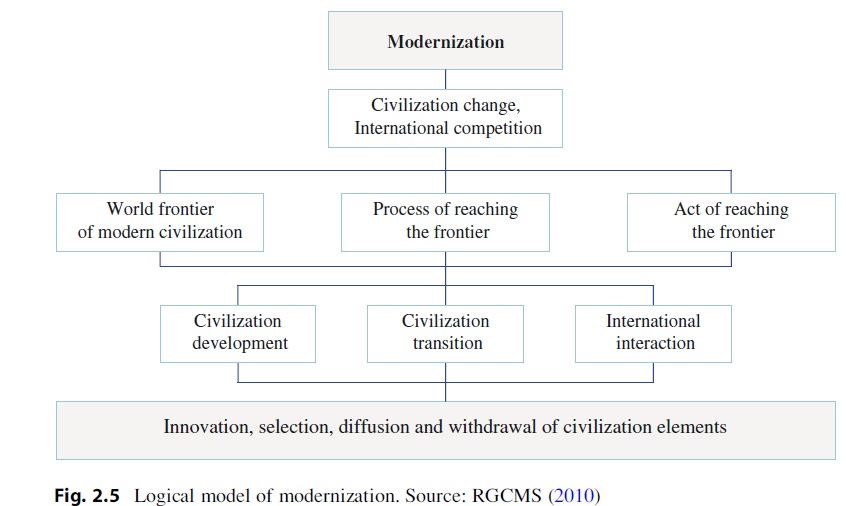
So who to believe? Is TAR still suffering for having spurned Beijing’s generosity back in 1987? Or is it now more than ever a securitised, skewed, lopsided economy with a fast growing security state sector financed by Beijing? In Nepal, TAR is portrayed as a new paradise of modernity and development, to be envied and emulated.
What these economists have done is to invent a proxy Tibet made up of Xinjiang, Shaanxi and Liaoning; then hold up the synthetic proxy against the official statistics of Tibet Autonomous Region. For Xinjiang read TAR throughout. Not so sophisticated after all.
This is a ludicrous admixture of reified categories, insistence that all official statistics are real and objectively true, that provincial development trajectories are directly comparable, and, above all, the strange assumption that development and growth are natural phenomena according with natural laws.
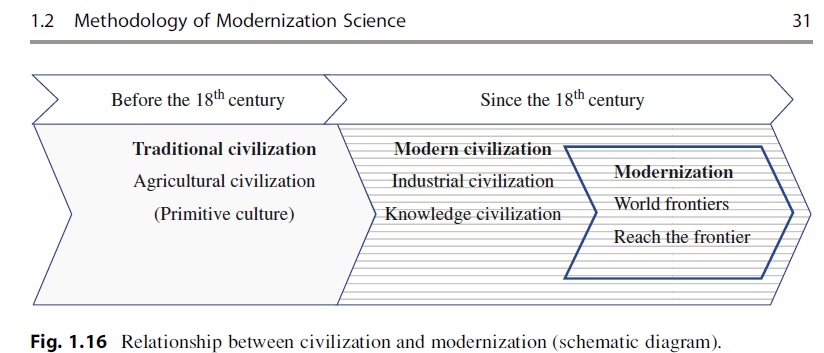
If ever there was an artificial economy, it is TAR, designed to showcase China’s civilising mission. Capital inflows into Tibet are overwhelmingly directly from Beijing, driven by policy, not growth opportunities. As Andrew Fischer has shown in a long booklength, the TAR economy is pumped up with capital expenditures commanded by Beijing, as China attempts to construct a showcase laboratory in TAR, designed and controlled from Beijing.[2]
The core argument of the inventors of Synthetic Control Tibet is that: “Tibetan separatist activities make Chinese government take a hardline attitude towards Dalai Lama. It hence exacerbates feelings of distrust and further deepens ethnic antagonism, which in turn threatens social stability and restricts local economic development.” This formulation locates agency, and the engine of growth, entirely in China’s hands. The Tibetans can behave badly and thus inhibit growth, but on their own they cannot accelerate growth. It all comes down to a question of Chinese investment, the implication being that once the Tibetans in 1987 articulated their grief, China instituted a capital strike, and recoiled from investing, setting up a chain of cause and effect now over 30 years old, with trackable economic consequences.
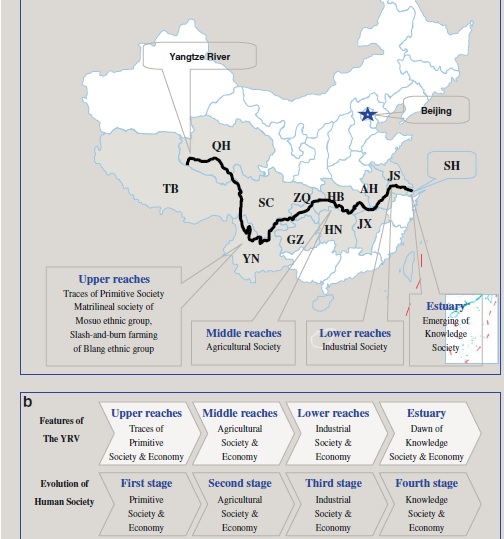
In reality, China was shocked to discover in 1987 that its propaganda was believed only by the propagandists, and that Tibetans were deeply unhappy that Premier Hu Yaobang’s promise to send back to China any Han cadres who failed to learn Tibetan had come to naught. China’s response was to securitize Tibet, to criminalise all efforts by Tibetans to be heard in the public sphere, to build more gaols and barracks.
The securitization of Tibet has steadily intensified over the decades since 1987. Far from a Chinese capital strike, the unrest of 1987 sparked an investment boom in intensifying both human intelligence obtained through informers and through torture, and signals intelligence through technologies of surveillance. Both humint and sigint required major capital expenditure. This has been documented in depth by Andrew Fischer and Adrian Zenz, barely acknowledged in this paper.
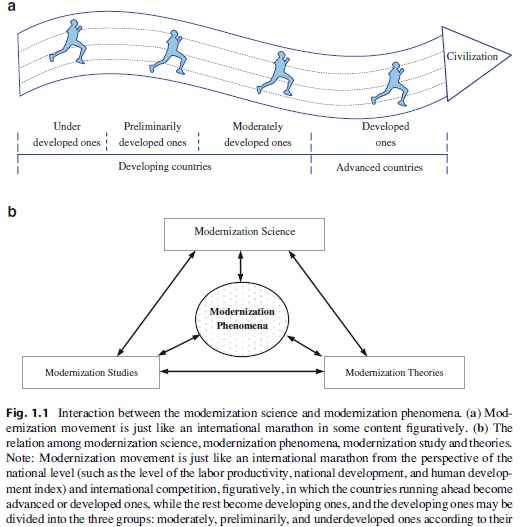
The authors of this conjured “synthetic control Tibet” fiction actually acknowledge the party-state’s investment in response to the protests, “sending well educated non-Tibetan personnel to Tibet, educating young Tibetan cadre, reinvigorating the party structure at all levels, and building more intensive economic and political partnerships with other regions. Additionally, the martial law was lifted on May 1, 1990, and the security was substantially improved by increasing the number of plainclothes officers and police substations.”
“After the conflict, Beijing deployed more armed officers in Tibet and continuously increased the expenditure on public security and armed police troops in Tibet, sent well educated non-Tibetan personnel to Tibet, and gave massive amounts of subsidies to attract more Chinese corporations to operate in Tibet.”
Notwithstanding all of that, they stick with their task of proving what they wanted to discover all along, that Tibet Autonomous Region has paid a high price, of slowed growth, due to the 1987 events. Their research paper concludes with a promise of more to come: “Consequently, we attribute the long-run effects of separatism on economic performance to the distortion in resource allocation induced by ethnic hostilities and distrust. Specifically, the ethnic separatism may impact regional economic development through (1) increasing public security expenditures, (2) crowding out foreign investment, (3) harming tourism industry, (4) creating a temporary “Brain Drain”, and (5) reducing both domestic and international trade activities which we will study in the future.”
Stand by for more revelations from Synthetic Control Tibet.
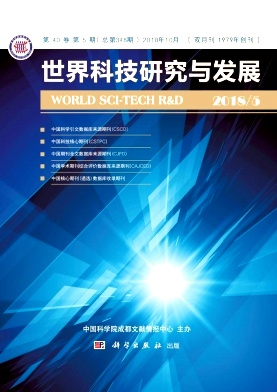
The inventors of Synthetic Control Tibet are agricultural economists, the classic team of middle aged (male) professor out to make a name as a commentator on many topics, and a young (female) postgrad who has already moved on, after doing all the work.
If they had stuck to agricultural economics, they would have noticed that a major reason the TAR economy is so skewed, with such a predominant services sector (mainly security services), and such a small agricultural primary sector, is because China failed to invest in agriculture, throughout the decades of China’s Tibet.
These authors explicitly subscribe to the foundational concept that economic growth is natural. In this they closely follow official ideology, which speaks of a universal law of development: “As long as we always adhere to the guidance of Xi Jinping’s new era of socialist economic thought with Chinese characteristics, conforming to the general trend of development, grasping the law of development, and defying difficulties facing our steadfast advancement, we will certainly win greater initiative in development.”[3]

If there is any such law of development, it would have sent China’s agricultural economists into Tibet, six, five, four, three decades ago to investigate the comparative advantages of Tibetan agriculture and livestock production sectors. Those agricultural economists would have quickly recognised a natural path to increase Tibetan incomes could be achieved by investing in the sorting, cleaning and marketing of Tibetan wool, especially the semi-fine wool suitable for making expensive garments. The agricultural economists would have recommended increasing the fineness and value of Tibetan wool by crossbreeding Tibetan sheep with hardy cold climate carpet wool sheep from New Zealand or Tasmania. They would have recommended investing in barley varieties suited to manufacture of bulk beer.

They would have recommended state investment in supply chains to get Tibetan dairy products to Chinese cities where urban demand for yoghurt has boomed. They would have set up farmer co-operatives able to pool their common pool land resources, be eligible for micro-finance to invest in technology and trucks to get their many dairy products to market in hygienic, temperature-controlled value chains. In reality almost none of this happened.
There have been several small-scale attempts at adding value to what Tibet produces in abundance. One such, in 2018, sent Chinese technicians from Xining all the way to remote Kham Nangchen to teach drogpa pastoralists how to make yoghurt and ice cream: “Recently, the [Qinghai]Provincial Animal Husbandry Institute of Animal Husbandry and Veterinary Sciences department held a “Dairy Processing Technology Enhancement Training Course”, which processed 10 dairy products from 9 professional cooperatives. The technicians trained in dairy processing technology. Researchers of dairy products processing from the Animal Products Research Office of the Animal Husbandry Institute of the Provincial Academy of Animal Science, focusing on the importance of health care of dairy sources, the importance of environmental hygiene in dairy products processing, the requirements for sterilization of milk buses, and the fermentation of yogurt. The technology, the principle of cheese drawing, the key points of processing ice cream, the main points of processing skim milk, the measures to extend the shelf life of the product, and the trial production of yogurt, cheese, skim milk, ice cream products, etc., were taught and carefully guided. The training has benefited a lot.”
The best one can say of such efforts is too little, too late. Nangchen is 800 kms from Xining and the cold chain logistics enabling market access simply don’t exist, even though newly upgraded highways are reducing transit time. Highways alone don’t create a network of Tibetan businesses able to sell to hip urban Chinese consumers who love their healthfood yoghurt, imported from New Zealand, a much longer supply chain. A Nangchen and Yushu workshop may explain the capital investment required to get nomad products hygienically to distant markets, but does nothing to finance the capital investment required.
China wants its development model to be a model emulated worldwide in developing countries, while insisting its development model is the scientific, objective, universal model. China wants to be the exemplary moderniser, master of the global logic of development as a rational process. Yet China’s ambition to be the acme of civilisation requires others to be the primitives, badly in need of modernisation. The Tibetans are the primitives. Han chauvinist racism is so embedded it just seems self-evident that the Tibetans are not only backward, but stubbornly ungrateful for China’s big brotherly efforts at modernisation, so it is no surprise Tibet’s development has supposedly lagged, ever since the 1987 protests in Lhasa.
The model of development exemplified in the diagrams embellishing this blog has been adopted by China, even though it is a totally Eurocentric model, with almost no Chinese characteristics, completely ignoring the scathing critiques from the global South, ridiculing the plodding literalism of China’s slavish replication of a European model.
Racist arrogance reinforced by scientistic mimesis of rationality is an impenetrable mix. Little wonder China’s rulers, isolated from reality by the walls of the old Zhongnanhai Palace headquarters of the CCP, are so sure they are leading not only China but the world to a new era. Delusion begets delusion.
China has absorbed all the textbooks written by Eurocentric development enthusiasts, turned it all into certainty, with Chinese characteristics, full of neat formulae and categories that sound scientific. Little wonder Tibetans, such as the poet Woeser, sometimes despair at the destruction, repression and denial done in the name of development and modernisation:
March is peculiar.
The sweeping winds are long in coming,/ and dust-filled air obscures a flame/ in my homeland.
From where I sit, my view is limited,/ the flame bright then dark. But even if I were nearby
I couldn’t approach it.
To behold such a sight/ would break my heart.
Even more houses destroyed/ by an invisible hand.
Even more prayers disappeared/ in the din of harsh and alien accents.
Even more pillaging and unstoppable negotiations.
Drifting, destitute and homeless.
This world of dust, a story/ full of grief.
From where I sit/ at the window/ on the twenty-first floor of a highrise,/ it is as though I’ve placed myself/ in a perilous frame/ of the twenty-first century.
No need to distance myself.
The flames are almost within reach/ but obscure.
Outside the window, the poison air/ seethes and boils.
No wonder all the living creatures/ of this country rot/ one after another.
I bow my head to record/ my homeland’s flames/ that spark suddenly and extinguish suddenly.
One by one by one, one hundred fifty-two flames and counting, unstoppable./ But there’s not a sound to be heard.
I think of the poet Pasternak,/ who wrote “dipping my pen into ink,/ I can not help/ but cry.”
And I also see this:/in the ashes,/a reborn soul/beautiful beyond compare.

Btw: the diagrams in this blog are taken from Prof He Chuanqi’s textbook on modernisation, published by Springer 2012, Modernization Science: The Principles and Methods of National Advancement. He Chuanqi’s China Center for Modernization Research, Chinese Academy of Sciences, Beijing, is not fringe academic but core elite.
That book says: “He is the author or coauthor of over 20 books on the study of modernization and innovation and over 100 articles in academic journals. Since 2000, he has taken charge of the research on China modernization strategies and guided the completion of the China Modernization Report each year from 2001 to 2011. In 2002, he established the China Center for Modernization Research, CAS, and has since served as the director of the center.”
The source cited by He Chuanqi 何传启 hechuanqi@263.net for the diagrams in this blog is RGCMS (Research Group for China Modernization Strategies et al) (2010) China Modernization Report 2010: world modernization outline 1700–2100. Peking University Press, Beijing, one in an annual series He Chuanqi and colleagues produced. The 2012 book in English distils the Peking University Press multi-volume series in Chinese. He continues to be influential, in 2018 publishing his “roadmap, model and priorities of China’s modernization in the coming 30 years,” in World Sci-tech R&D Journal, 世界科技研究与 Vol. 40 Feb 2018, No. 1, 5 - 16
何 传 启. 现 代 化 科 学: 国家发达的科学原理. 北京: 科学出版社,2010. HE Chuanqi. Modernization Science: the Principles of National Advance. Beijing: Peking University Press 2010
中国现代化战略研究课题组,中国科学院中国 现代化研究中心. 中国现代化报告 2006: 社会现 代化研究. 北京: 北京大学出版社,2006. Research Group for China Modernization Strategy, China Center for Modernization Research,Chinese Academy of Sciences. China Modernization Report 2006: Social Modernization[M]. Beijing: Peking University Press,2006
何传启主编. 第六次科技革命的战略机遇( 第二 版). 北京: 科学出版社,2012. HE Chuanqi ( ed. ) . Strategic Opportunity of the Sixth Revolution of Science and Technology ( 2nd edition). Beijing: Science Press,2012.
何传启主编. 中国现代化报告 2017: 健康现代化 研究. 北京: 北京大学出版社,2017.
HE Chuanqi ( ed. ) . China Modernization Report
2017: Health Modernization[M]. Beijing: Peking
University Press,2017.
[1] Bai Yunyi and Zhang Dan, Tibetan unrest took 27% off GDP per capita in 1988-2007: researchers, Global Times 2019/1/30
[2] Andrew Martin Fischer, The Disempowered Development of Tibet in China: A study in the economics of marginalisation, Lexington, 2014
[3] Jingji Ribao (Economic Daily) 9 January 2019 http://paper.ce.cn/jjrb/html/2019-01/09/content_381135.htm
What would Karl Marx have to say about Synthetic Control Tibet, and a “modernisation science” that positions Tibet as primitive, remote, backward and upriver? Actually, all we need to know these days is Karl found true love with Jenny.